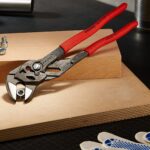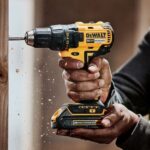You’ve probably used or seen a monkey wrench but wondered why it’s called that. The name sounds playful but the tool itself is anything but. It’s a versatile adjustable wrench that’s been a staple in toolkits for over a century.
Understanding why it’s called a monkey wrench gives you insight into its history and design. The term isn’t just random—it has interesting origins tied to how the tool functions and its inventor’s story. Knowing this can make you appreciate the wrench beyond just its practical use.
The Origin of the Term “Monkey Wrench”
The term “monkey wrench” roots in the tool’s design and historical invention. Its name relates to the wrench’s adjustable mechanism and early users who popularized it.
Historical Background of the Monkey Wrench
You find the monkey wrench traces back to the 19th century. It gained popularity due to its adjustable jaw, which fits various bolt sizes. Unlike fixed wrenches, you can adjust the jaw width, making it versatile in different mechanical tasks. The tool’s design is credited with improving efficiency in industries like railway construction and machinery maintenance.
Early Uses and Inventors
You can attribute the monkey wrench’s invention commonly to Charles Moncky, although historical records provide debate about the exact inventor. The name “monkey wrench” possibly derives from Moncky’s last name or the wrench’s ‘monkey-like’ jaw movement. Another key figure is Loring Coes, who in 1840 patented a similar adjustable wrench design in the United States. Early users included railroad workers and mechanics, who embraced the tool for its adaptability and practical value.
The Name “Monkey Wrench”: Theories and Explanations
The origin of the term “monkey wrench” sparks various theories and stories that explain its unusual name. Understanding these explanations helps clarify common doubts and highlights the linguistic and cultural context behind the term.
Linguistic Theories Behind the Term
The term “monkey wrench” likely derives from the tool’s adjustable jaws resembling a monkey’s hand or the twisting motion associated with monkeys. The word “monkey” in this case may describe the tool’s versatile grip, which mimics how a monkey clutches objects. Another linguistic theory connects the name to the slang use of “monkey” meaning to tamper or fiddle, referring to the wrench’s ability to adjust tightly around bolts. Additionally, some sources link the name to the inventor Charles Moncky, although this connection remains debated due to insufficient patent records. These linguistic origins combine descriptive imagery and colloquial language to explain why the tool received this distinctive name.
Popular Myths and Misconceptions
Several myths surround why the tool is called a monkey wrench. One common myth suggests the wrench was named after an actual monkey trained to turn bolts, but no historical evidence supports this story. Another misconception claims the term originated as a racist slur linked to the tool’s use in certain regions; however, research into industrial history disproves this. A frequent error also attributes the invention solely to Charles Moncky, ignoring Loring Coes’ patent and contributions. These myths often arise from misinterpretations of the tool’s history and the term’s etymology. Distinguishing fact from fiction reveals a clearer, more accurate picture of the monkey wrench’s naming.
Differences Between Monkey Wrench and Other Wrenches
Understanding how a monkey wrench compares to other wrenches highlights why it earned its name and specific uses.
Comparison with Pipe Wrenches
Pipe wrenches feature serrated jaws that grip round objects like pipes, preventing slippage under torque. You notice their jaws pivot slightly to lock tighter as pressure increases. The monkey wrench has flat, smooth jaws designed to grip flat-sided fasteners such as nuts and bolts. If you use a monkey wrench on pipes, it may slip or damage the surface, while pipe wrenches adjust to varying pipe diameters with a self-tightening mechanism you won’t find in monkey wrenches.
| Feature | Monkey Wrench | Pipe Wrench |
|---|---|---|
| Jaw Design | Flat and smooth | Serrated for gripping round pipes |
| Jaw Movement | Fixed adjustable position | Pivoting, self-tightening |
| Best Use | Flat-sided bolts and nuts | Round pipes and fittings |
| Slippage Risk | Higher on round objects | Low due to jaw design |
Unique Features of a Monkey Wrench
A monkey wrench’s standout feature is its adjustable flat jaws that open to fit bolts and nuts of various sizes without damaging their edges. Unlike modern adjustable wrenches, monkey wrenches have a heavier, more robust build, often made from forged steel for durability. Their straight handles and symmetrical jaw shape provide strong leverage and precise grip. You also see a simple screw mechanism for adjusting the jaw width easily, tailored for industrial tasks requiring strength and reliability.
Cultural Impact and Popularity of the Term
The term “monkey wrench” became part of everyday language beyond its identification as a tool. You encounter the phrase in idioms such as “throwing a monkey wrench into the works,” which means causing disruption or unexpected problems. This expression emerged in the early 20th century and reflects how the wrench’s design symbolized a sudden interference or complication in mechanical operations.
You see “monkey wrench” referenced frequently in literature, film, and music, further embedding the term in popular culture. For example, songs and movies have used the phrase metaphorically to describe interference or sabotage, reinforcing its association with obstruction and unexpected challenges. This widespread cultural presence contributes to the lasting familiarity and recognition of the term.
The tool’s role in industrial history influences its cultural significance. Workers in railroads, manufacturing, and automotive industries popularized the monkey wrench, linking it to themes of labor and craftsmanship. Its historical connection to American industrial progress also makes it a symbol of practical innovation and hands-on problem-solving.
Despite the rise of specialized adjustable wrenches, the phrase “monkey wrench” remains prevalent. Its metaphorical use in business, politics, and everyday speech surpasses its literal application, ensuring the term’s continued relevance. Its recognition persists largely due to its distinctive name combined with the tool’s historical importance and symbolic meaning in language and culture.
Conclusion
Understanding why it’s called a monkey wrench gives you more appreciation for this classic tool’s design and history. Its name reflects both its clever adjustable mechanism and the colorful stories behind its use.
Whether you’re a DIY enthusiast or just curious about tool origins, knowing the facts helps you separate myths from reality. The monkey wrench remains a symbol of versatility and industrial innovation, making it a staple in toolkits and language alike.
Frequently Asked Questions
What is the origin of the term “monkey wrench”?
The term “monkey wrench” likely comes from the tool’s adjustable jaws resembling a monkey’s hand or from the slang use of “monkey,” meaning to fiddle or tamper. It dates back to the 19th century and is connected to its versatile design and early users like railroad workers.
Who invented the monkey wrench?
The invention is usually credited to Charles Moncky or Loring Coes, who patented a similar design in 1840. However, there is some debate about the exact inventor, with both figures playing key roles in popularizing the tool.
How does a monkey wrench differ from a pipe wrench?
A monkey wrench has flat, smooth jaws designed for gripping flat-sided nuts and bolts. A pipe wrench has serrated jaws meant for gripping round pipes. This makes each wrench suitable for different tasks and materials.
Why is the monkey wrench important in industrial history?
Its adjustable jaw allowed one tool to fit many bolt sizes, improving efficiency in industries like railway construction and machinery maintenance. This versatility helped enhance productivity and reduce the need for multiple fixed wrenches.
Is the phrase “throwing a monkey wrench into the works” related to the tool?
Yes, the phrase started in the early 20th century and refers to causing disruption or unexpected problems, inspired by the wrench’s design symbolizing interference in mechanical operations.
Are the stories about the monkey wrench being named after a trained monkey true?
No, that is a popular myth. The name does not come from trained monkeys but from the tool’s mechanism and slang meanings. The racist slur origin theory is also unfounded.
Why has the term “monkey wrench” remained popular over time?
The term remains popular due to its distinctive name, cultural impact, and idiomatic use in language to signify sabotage or disruption, keeping it relevant in business, politics, and everyday speech.


